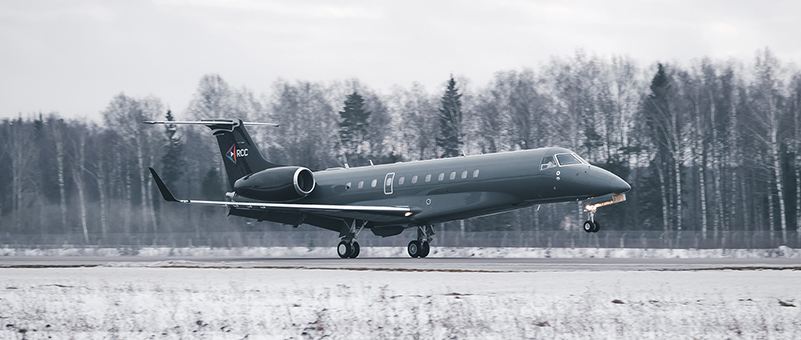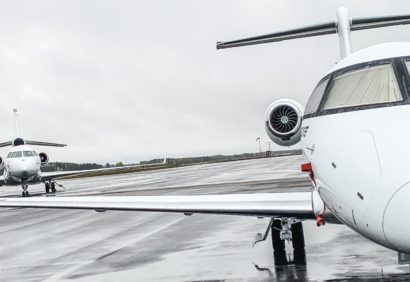How To Charter An Aircraft?
Chartering an aircraft is easier and more accessible than it sounds! If you follow the steps and if you get the proper support, arranging a dedicated flight is a great tool to improve the efficiency with which you travel as a group. Regardless of the number of passengers, the purpose of the trip, the route and your travel schedule, a solution exists. From the use of business aircraft to our incentive travel solutions, from tour-operator charter chains to sport enthusiast day trips, the options are virtually limitless.
Our job is to design and implement the aircraft charter solution that is the most adapted to your needs. By assisting you throughout the process, we make sure that no key element is left out of the equation so that you can make the most of all the advantages of private flights.
Whether it’s a group of a few colleagues on a specific journey that requires to arrange a light jet charter, a sports team attending an out-of-town match or your employees for who you need to arrange transportation as part of your company’s day-to-day operations or on an exceptional basis (seminars, incentive trips, training programs), follow the guide and enjoy the ride!
Because aviation hardly tolerates improvisation, below you will find our recommendations and an explanation of the best practices in terms of chartering an aircraft (airplane or helicopter):
Contents
#1 – Understanding your needs
Together, we establish or refine the project specifications by sorting and prioritizing your list of constraints and requirements:
- Origin(s) and final destination(s) of the passengers
- Budget to be determined according to the global financial constraint of the trip
- Quantity and dimensions of luggage, cargo, goods or equipment
- Personalization tools related to the adaptation of the passenger experience
- Special security requirements (standards imposed by your internal procedure, your industry, your insurance company, the labor organizations, etc).
- Any element specific to your situation to be taken into consideration: nationality of passengers and local formalities, applicable taxation…

#2 – Project conceptualization
This phase is key to design the best possible solution. It is therefore crucial that during the previous step you provide us with as much information as possible: flexibility on dates, whether or not to combine with scheduled services, the possible requirement to split the group of passengers, transport of bulky and/or heavy equipment… It is indeed by combining your needs with market opportunities that we can differentiate by offering you the solution that really is best suited to you. It is not necessarily the one you had initially imagined.
Our consultants will then determine a sourcing strategy and set a strategy to design reliable solutions that are the most relevant given the market conditions and our forecasts. This leads to the choice of the eligible aircraft types and carriers, a selection of route(s) associated with the relevant date(s). These combinations are intended to give you the freedom to choose between several alternatives, all of which are economically viable and will meet your specifications.
#3 – Tendering
Based on the previously defined strategy, the work of putting carriers in competition begins. The contacted airlines have previously been checked on their technical and financial capacity to carry out the type of missions they could be entrusted with.
The first stage in the evaluation of the bids gathered by our experts is to check that all the technical and commercial aspects have been taken into consideration, particularly the operational requirements:
- Compatibility between the range required and the required payload
- Performance and specifications compatible with the airports served and the routes are flown
- Adequacy of aircraft navigation equipment for operation in certain specific airspaces
- Airport opening hours, is there a risk of extension refusal? Would there be an additional cost?
- Traffic rights: the probability of being granted? How to mitigate the risk of refusal?
- Etc.
#4 – Selecting the right solution
Once these verifications have been made, your designated expert will create a comprehensive offer by prioritizing the different available options in accordance with your requirements and the importance of each of them. She or he will be keen to highlight the most important features of the offer that you need to take into careful consideration before making your decision. Frequently, certain aspects such as the market rate of fuel oil, the fees, the insurance premium or even the positioning costs used for the calculation of the quotation are not accurate in view of the market trends. Consequently, the price invoiced to you is subsequently re-evaluated after the charter contract has been signed.
#5 – Exclusive negotiation with the carrier
Once an initial filter of solutions has been set up, our expert will enter negotiations with a limited selection of bidders. The focus of the discussion will be the price, what it covers and the supporting service such as in-flight catering or baggage allowance. The cancellation terms or the passenger assistance provisions in the event of operational contingencies will also be closely evaluated. This aspect is unique, and we will use our expertise to consider all operational situations that could have an impact on your project. In order to mitigate the risk, we may negotiate performance guarantees or a certain level of coverage in case of operational events. This may involve scheduling adjustments up to sub-chartering solutions. After having compiled a detailed analysis of the results obtained, we will submit our recommendations to you, presenting the advantages of each solution.
#6 – Flight preparation
This phase is crucial as it allows us to anticipate all aspects of your aircraft charter. This prevents any omissions or communication errors that could, on the day of the flight, cause a delay, a change of program or any event that would impact your passenger experience.
- On your side… This is the phase where you can express all your wishes to enhance or personalize the travel experience for you and your passengers. Many customization options are available. Some are free, some are not. From displaying your brand on airport screens to à la carte dining prepared by a Michelin-starred chef, the range of these services is as long as it is varied.
- On our side… In addition to offering you the personalization options mentioned above, our task is to ensure that everything that is essential to the success of your flight is correctly confirmed: various clearances, airport slots, traffic rights, specific passenger handling requirements…
Under standard circumstances, you should not hear about this behind-the-scenes work unless your involvement becomes necessary to accompany certain procedures (for example, applying to traffic rights generally requires contact of the receiving parties) or if a choice must be made between situations that arise. Once again, our job will be to assist you by presenting you with the various advantages and potential risks that each of the alternatives might generate. Our role is to accompany you through all the steps leading to a successful aircraft charter. At the end of this phase, we will provide you with a detailed and comprehensive briefing document that summarizes the course of the operations.
#7 – On-site and remote flight tracking
In order to anticipate the consequences of a substantial technical issue that could compromise the on-time performance of your flights, we are once again adopting an anticipatory approach. 24 hours before the scheduled time of departure, we carry out a market survey to identify the availability of aircraft of similar size and performance to the one you have booked. In the case of major mechanical failure, we will then be able to propose without delay the most effective solutions to resume your travel as quickly as possible.
On the day of departure, our expert gets to the airport early to check that the latest features of the flight have been correctly implemented: the latest version of the passenger list, the seat pre-assignment, the text or logo to be displayed on the screens… We will inform you as soon as possible of the check-in area or the counters assigned to your passengers and their baggage. This information is sometimes available the previous day, sometimes only a few hours before.
During check-in, together with your representative, we ensure that the operations run smoothly and that all scheduled passengers are processed before the check-in deadline.
At the same time, after monitoring the progression of the aircraft’s positioning flights, we make sure to be physically present at the aircraft’s parking stand when it arrives, so that we can immediately check the proper execution of the orders for on-board service (beverage service, meals, press, customization items such as headrest covers, on-board announcements, distribution of promotional items, etc.). During the outbound flight, at the destination, during the return flight, we remain your single point of contact, contactable at any time for any question, for any change, etc.
#8 – Post-flight review and quality assessment
Once the mission is completed, we carry out a quality survey with the carrier, the airport handling contractors, the various service providers, our on-site / on-board representative and, of course, with your teams. The primary goal is to check compliance but also to apprehend any possible irregularities, to identify their origins and to learn from them. This procedure is crucial. Most carriers rarely conduct such practice as most of their attention is focused on flight safety.
The assessment and the report we build covers all aspects of the project. When it is sent out to your consideration, we join a satisfaction questionnaire. Your answers are key to help us improve the service we deliver.






